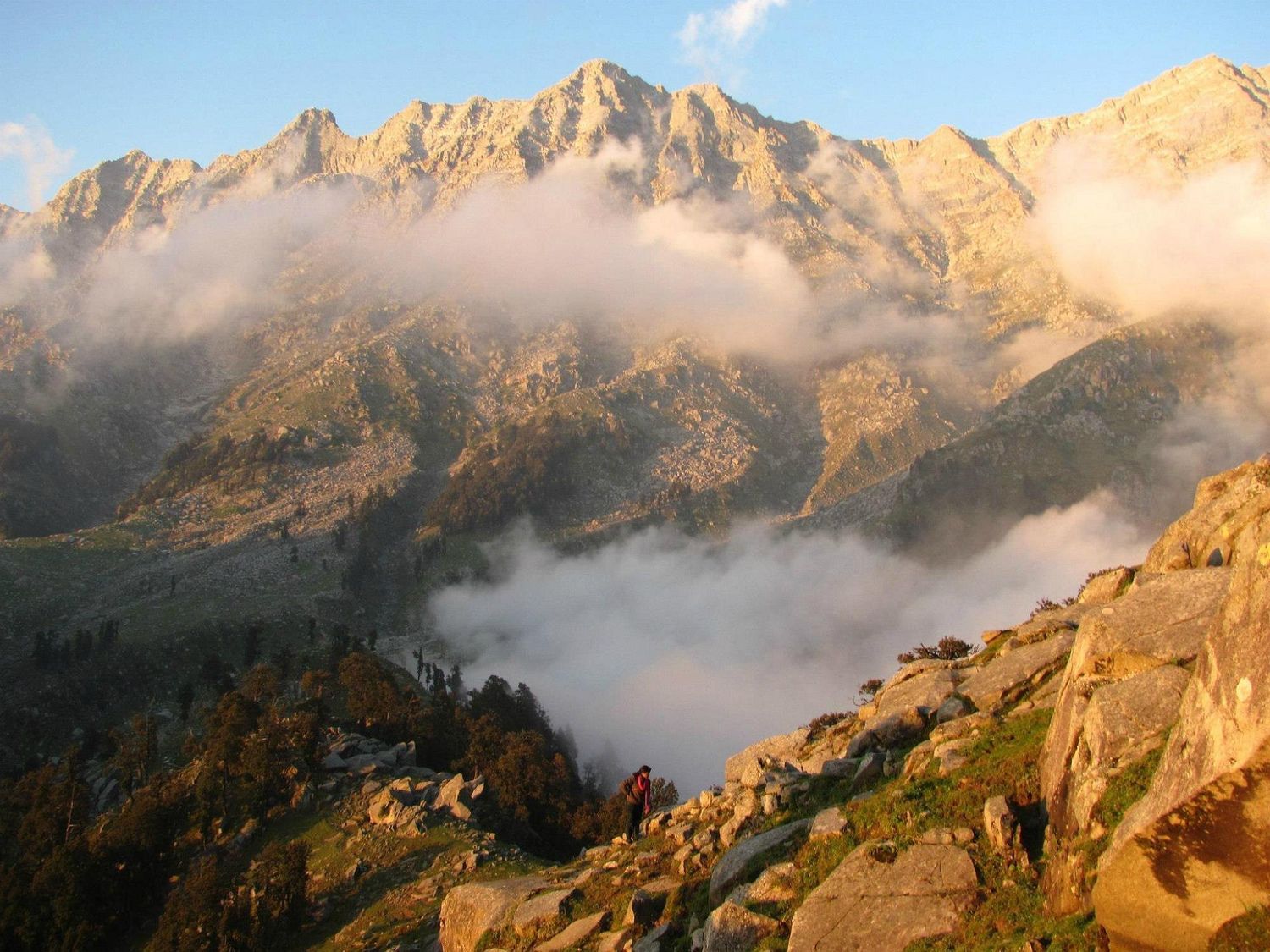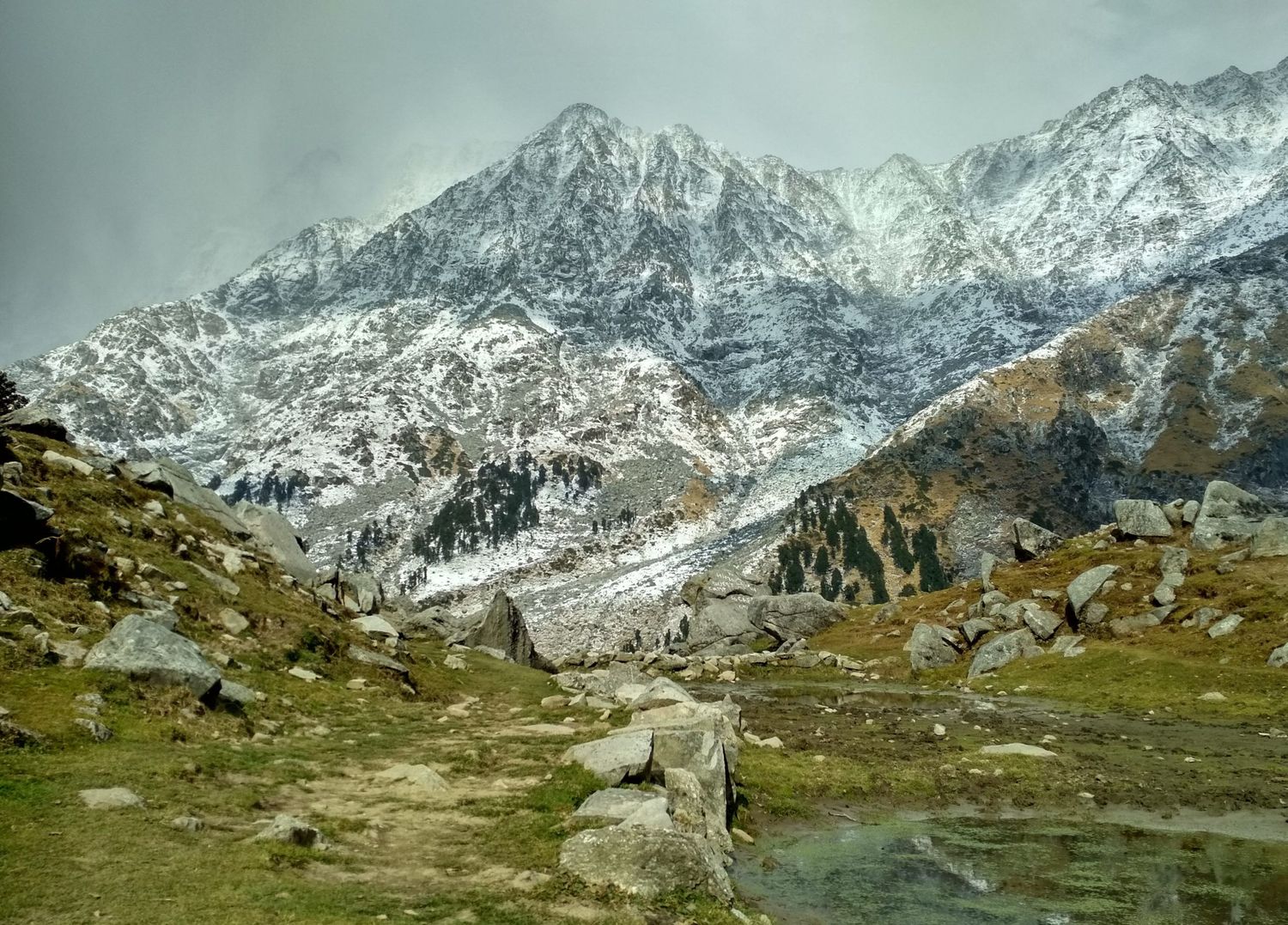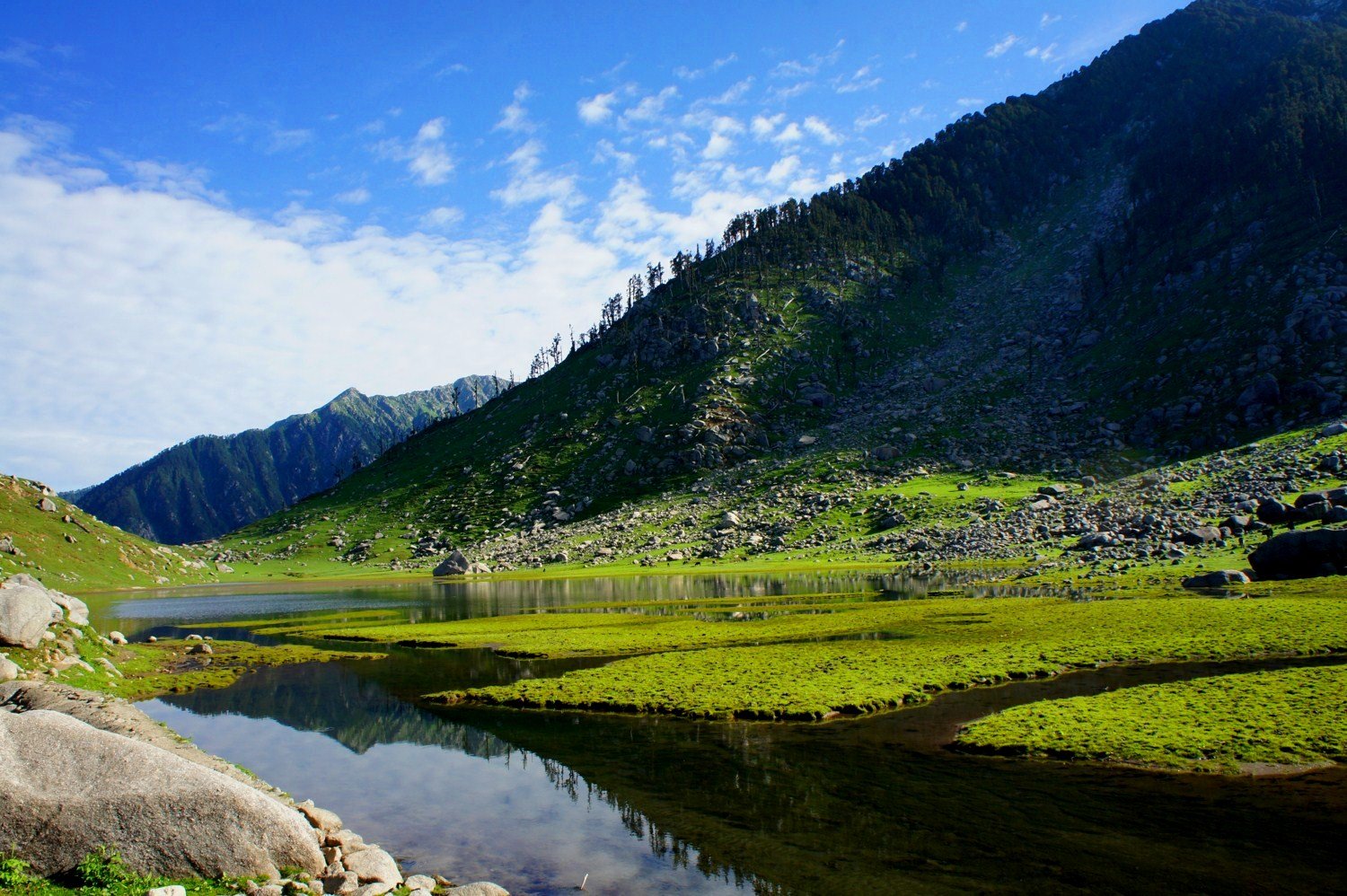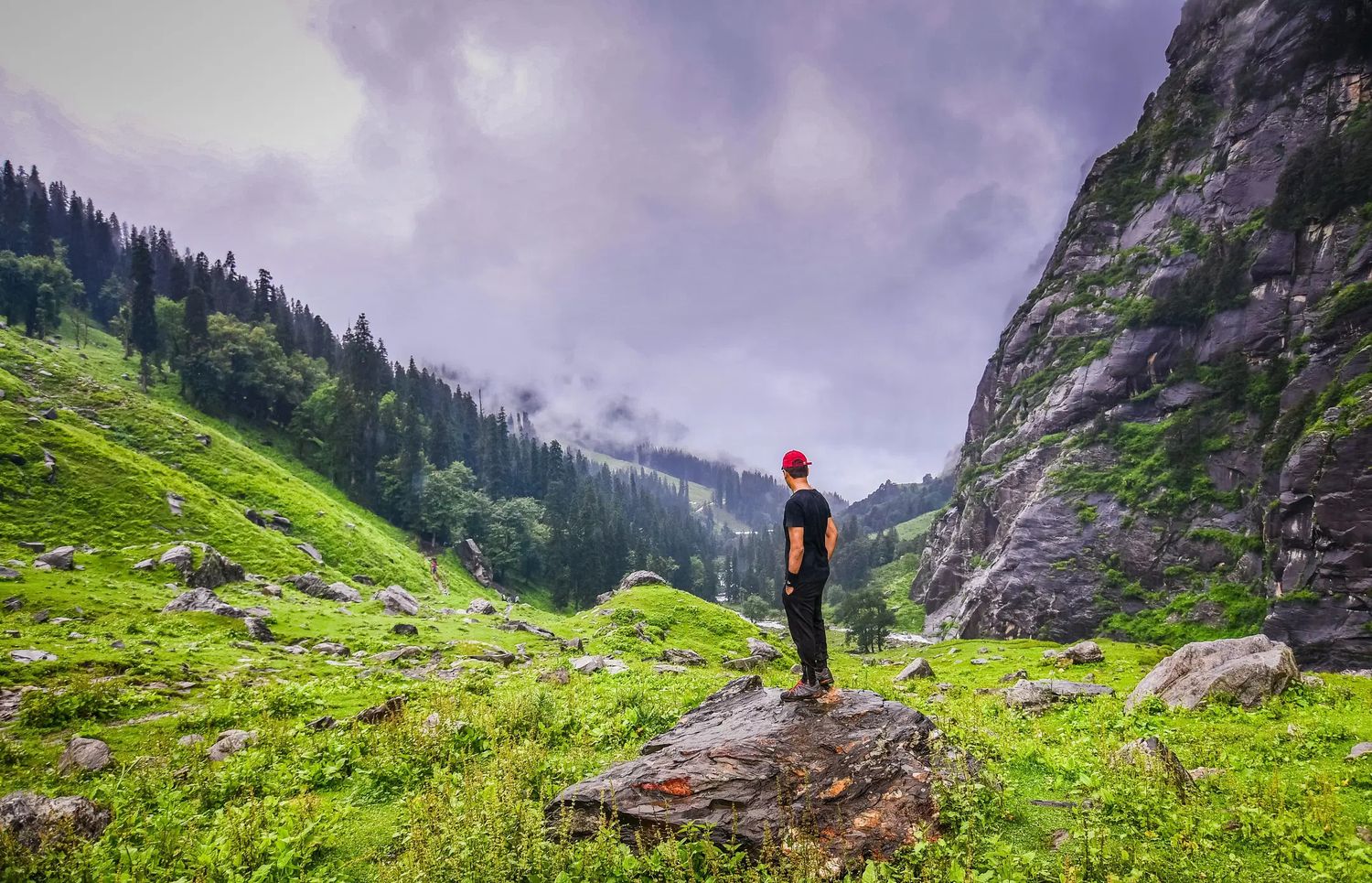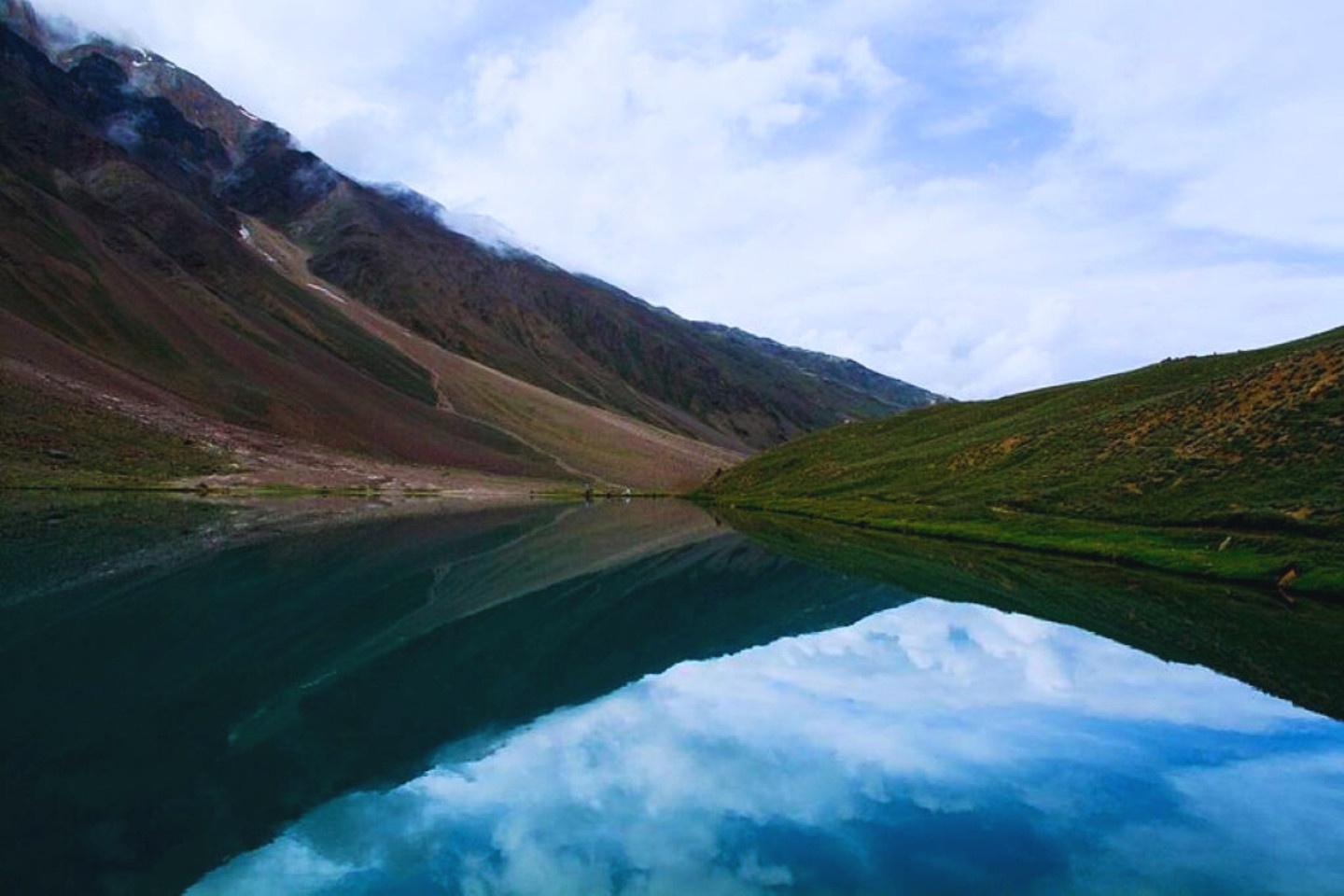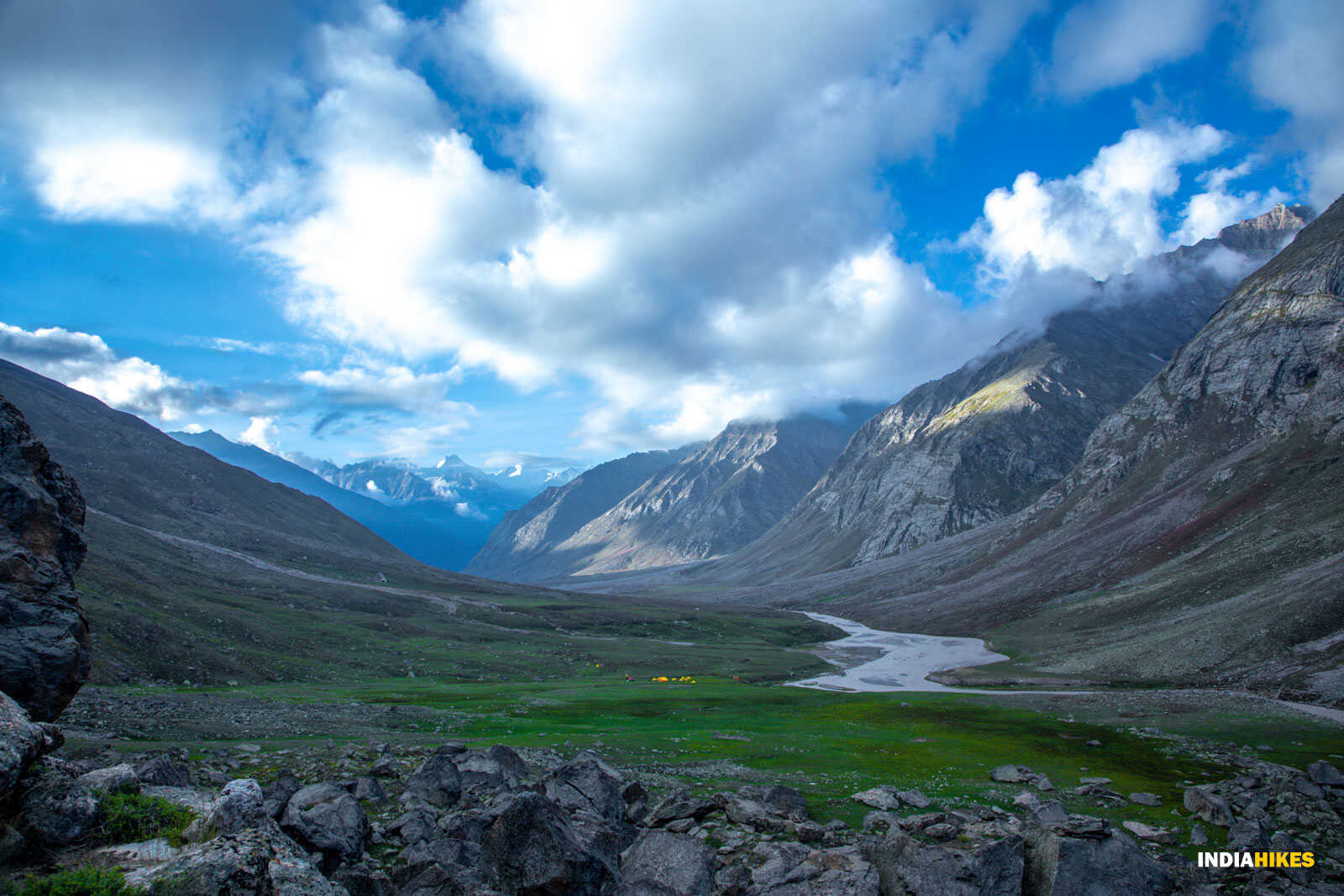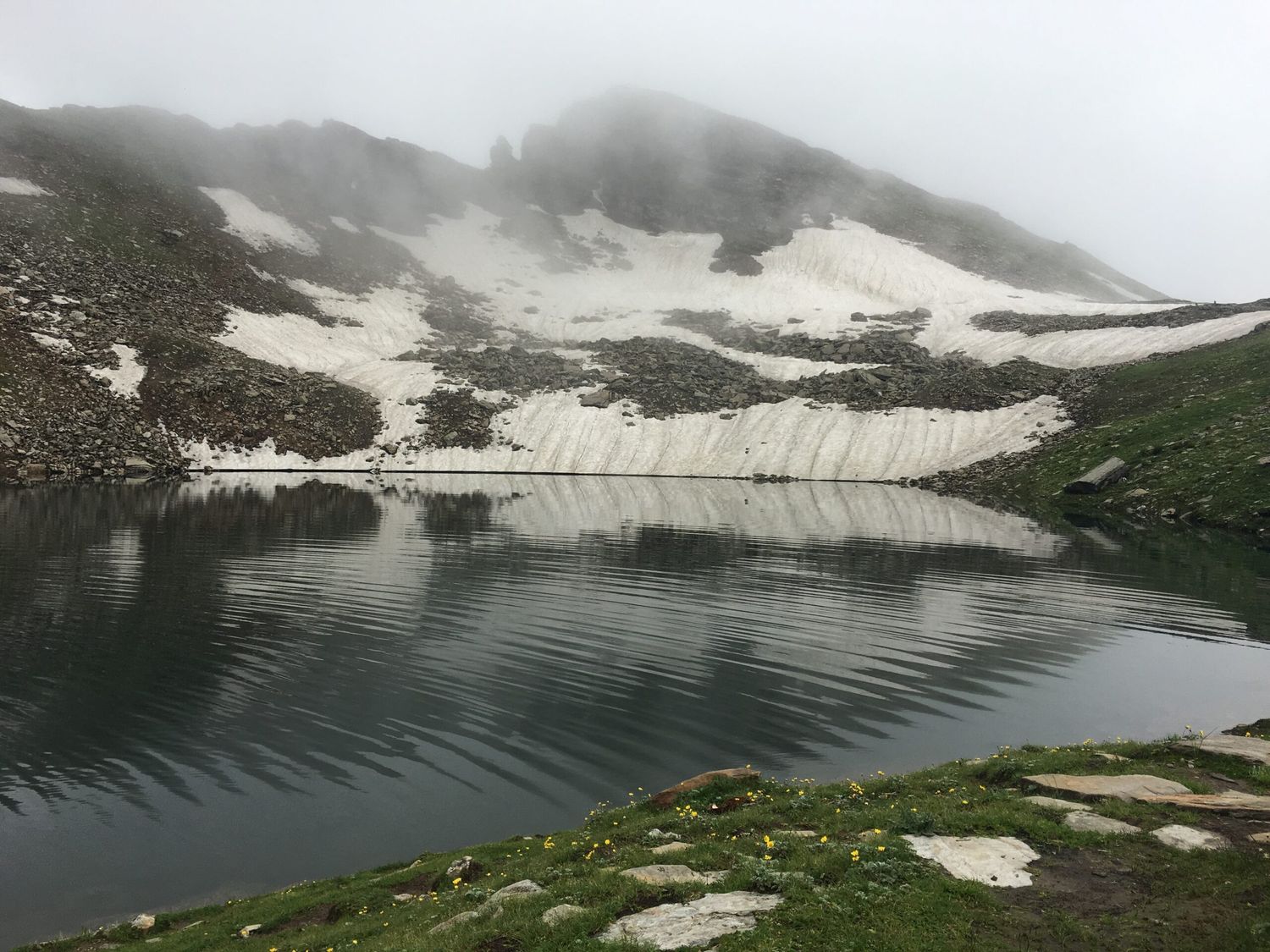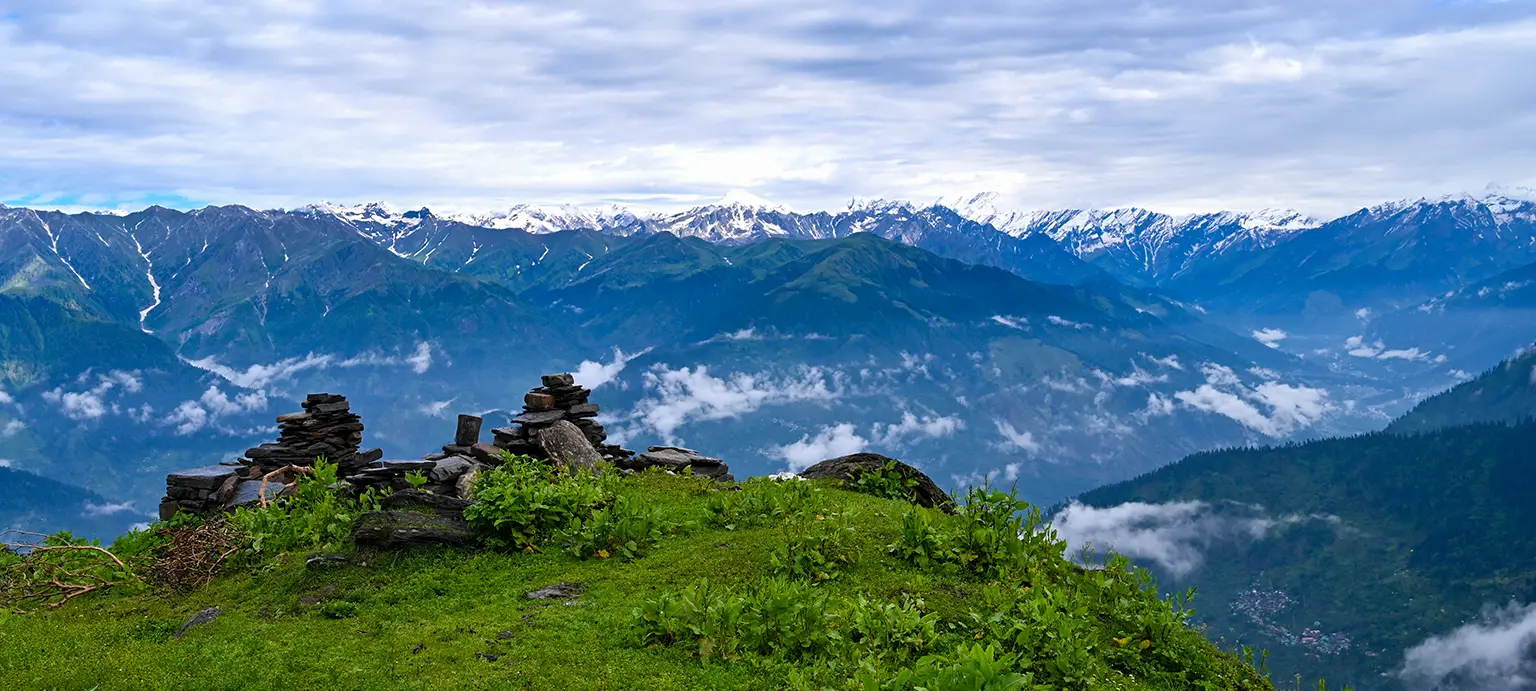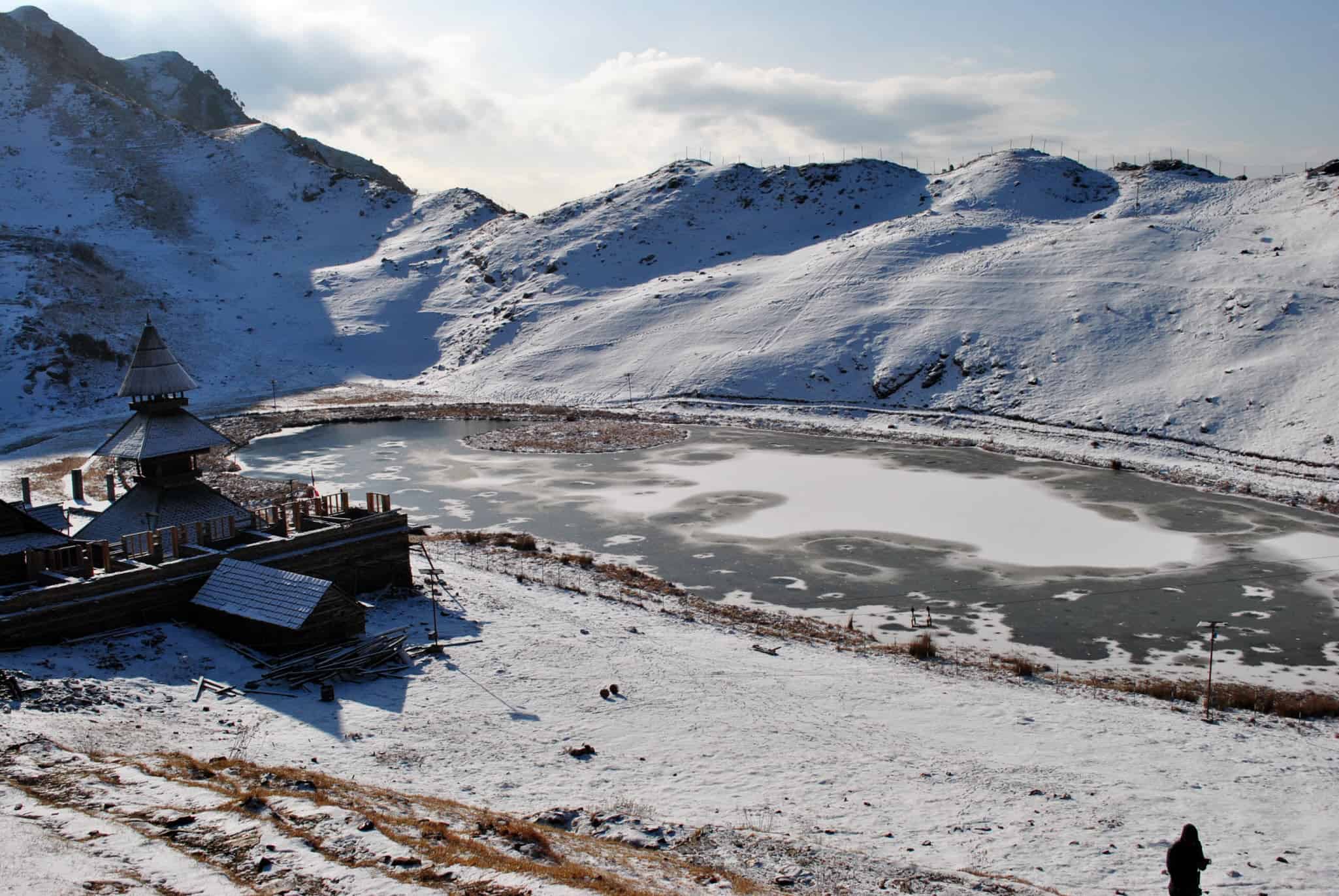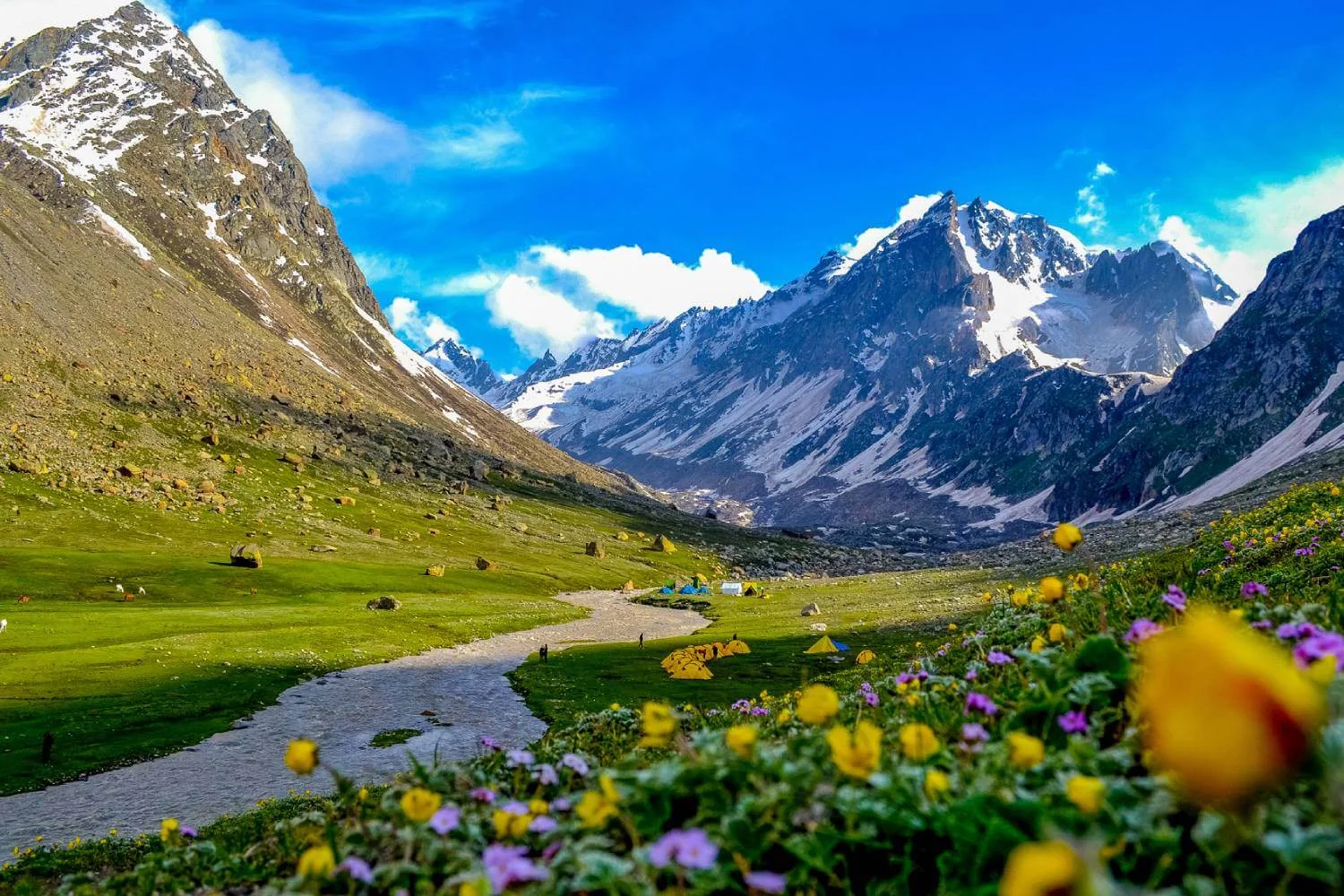Indrahar Pass Trek: Gateway to the Mighty Dhauladhars
The Indrahar Pass Trek is one of the most popular treks in Himachal Pradesh, taking adventurers from the bustling town of McLeod Ganj to the high mountain pass of Indrahar at 14,245 ft. Known for its dramatic landscapes, the trail covers lush deodar forests, alpine meadows, rocky ridges, and snow patches. It offers breathtaking views of the Dhauladhar and Pir Panjal ranges and is a thrilling adventure for both experienced and intermediate trekkers. With its mix of spirituality, adventure, and natural beauty, the Indrahar Pass Trek is a must-do in the Indian Himalayas.
The Trail Experience
Starting from McLeod Ganj, the trek ascends through the famous Triund meadows, followed by the rocky ascent to Lahesh Cave and finally to the high-altitude Indrahar Pass. Each section offers a change in scenery, from bustling trailheads to serene alpine views.
Panoramic Views
From the pass, trekkers are rewarded with grand views of the Pir Panjal range, Manimahesh Kailash peak, and the sweeping Kangra Valley below. These panoramic vistas make the climb worth every step.
Highlights of the Trek
- Cross the Dhaul
